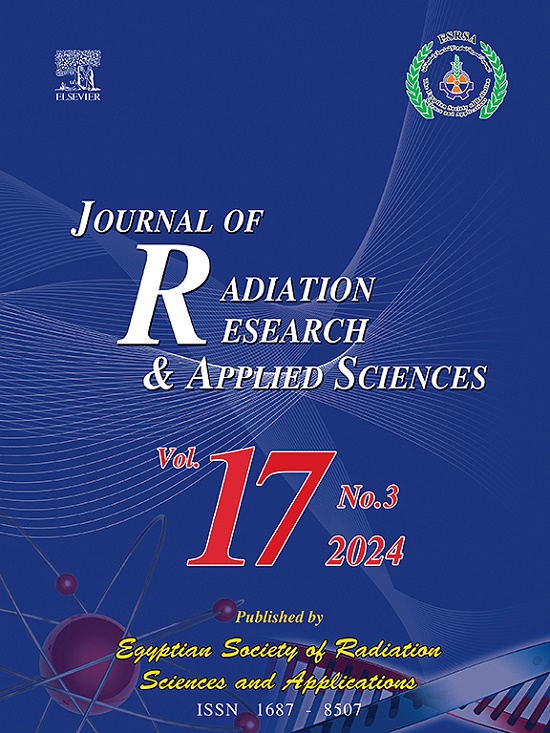热辐射对Powell Eyring流体MHD滞止点流动的意义:一个传热传质问题
IF 1.7
4区 综合性期刊
Q2 MULTIDISCIPLINARY SCIENCES
Journal of Radiation Research and Applied Sciences
Pub Date : 2025-03-11
DOI:10.1016/j.jrras.2025.101383
引用次数: 0
摘要
本研究探讨了辐射和驻点流动对多孔收缩表面的影响,特别关注粘性耗散、热源/汇效应和质量扩散对质量和传热过程的影响。通过适当的相似变换,将速度、温度和浓度的控制方程从偏微分方程转化为非线性常微分方程系统。然后利用BVP4C求解器结合MATLAB中的射击方法,在包含辐射和热源/汇效应的能量方程的指定边界条件下求解这些方程。通过表格法和图解法对质量和热蒸腾、普朗特数、热辐射、粘性耗散和路易斯数等关键物理参数进行了分析。主要发现表明,磁场强度的增加显著放大了局部皮肤摩擦,如相应的等高线图所示。此外,热辐射水平、粘性耗散和路易斯数的增加导致热边界层的扩大,从而导致浓度和温度曲线的降低。这些结果在工程、生物和物理科学领域具有重大意义,并在发动机润滑油净化和推力轴承技术等应用中具有实际应用价值。本文章由计算机程序翻译,如有差异,请以英文原文为准。
Significance of thermal radiation on MHD stagnation point flow of Powell Eyring fluid: A heat and mass transfer problem
The current study investigates the impact of radiation and stagnation point flow on a porous shrinking surface, with a particular focus on the mass and heat transfer processes influenced by viscous dissipation, heat source/sink effects, and mass diffusion. The governing equations for velocity, temperature, and concentration are transformed from partial differential equations into a system of nonlinear ordinary differential equations using appropriate similarity transformations. These equations are then solved under specified boundary conditions incorporating energy equations with radiation and heat source/sink effects using the BVP4C solver alongside the shooting method in MATLAB. Key physical parameters, including mass and heat transpiration, Prandtl number, thermal radiation, viscous dissipation, and Lewis number, are analyzed through both tabular and graphical methods. The main findings reveal that an increased magnetic field intensity significantly amplifies the local skin friction, as depicted in the corresponding contour plots. Moreover, escalating levels of thermal radiation, viscous dissipation, and Lewis number result in an expanded thermal boundary layer, which in turn leads to diminished concentration and temperature contours. These results have substantial implications across engineering, biological, and physical sciences and present practical utility in applications such as engine lubricant purification and thrust bearing technologies.
求助全文
通过发布文献求助,成功后即可免费获取论文全文。
去求助
来源期刊

Journal of Radiation Research and Applied Sciences
MULTIDISCIPLINARY SCIENCES-
自引率
5.90%
发文量
130
审稿时长
16 weeks
期刊介绍:
Journal of Radiation Research and Applied Sciences provides a high quality medium for the publication of substantial, original and scientific and technological papers on the development and applications of nuclear, radiation and isotopes in biology, medicine, drugs, biochemistry, microbiology, agriculture, entomology, food technology, chemistry, physics, solid states, engineering, environmental and applied sciences.
 求助内容:
求助内容: 应助结果提醒方式:
应助结果提醒方式:


